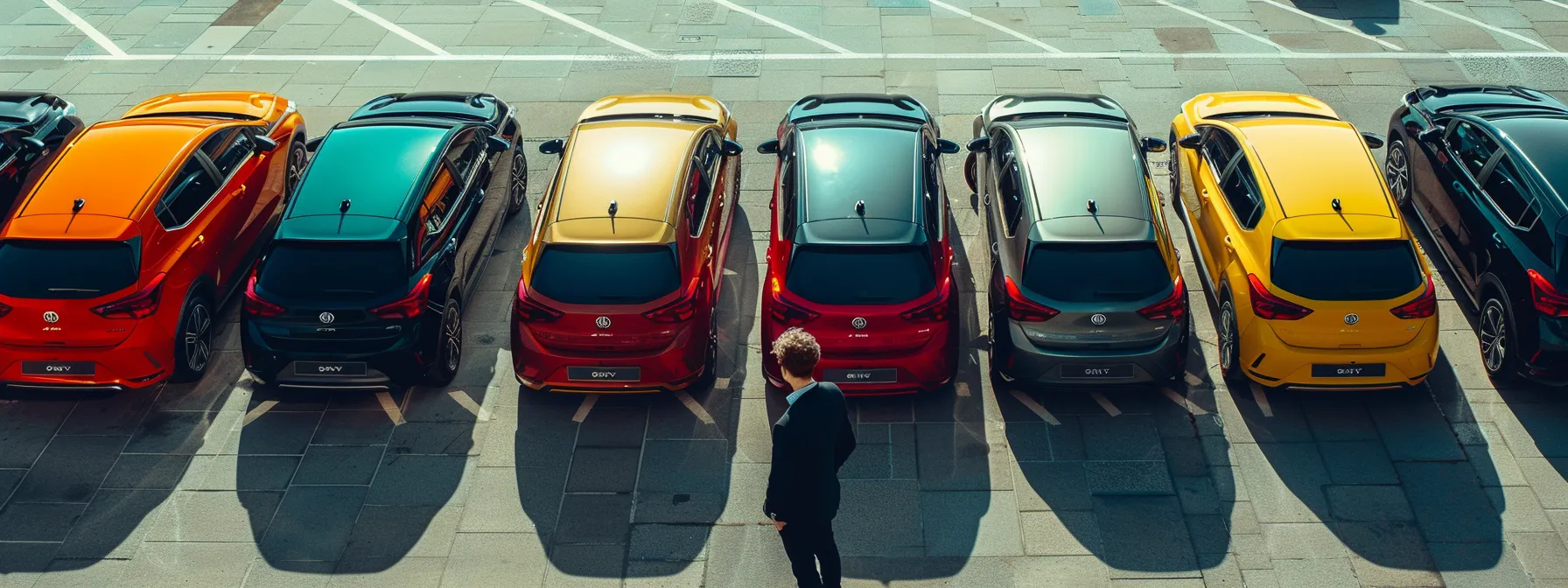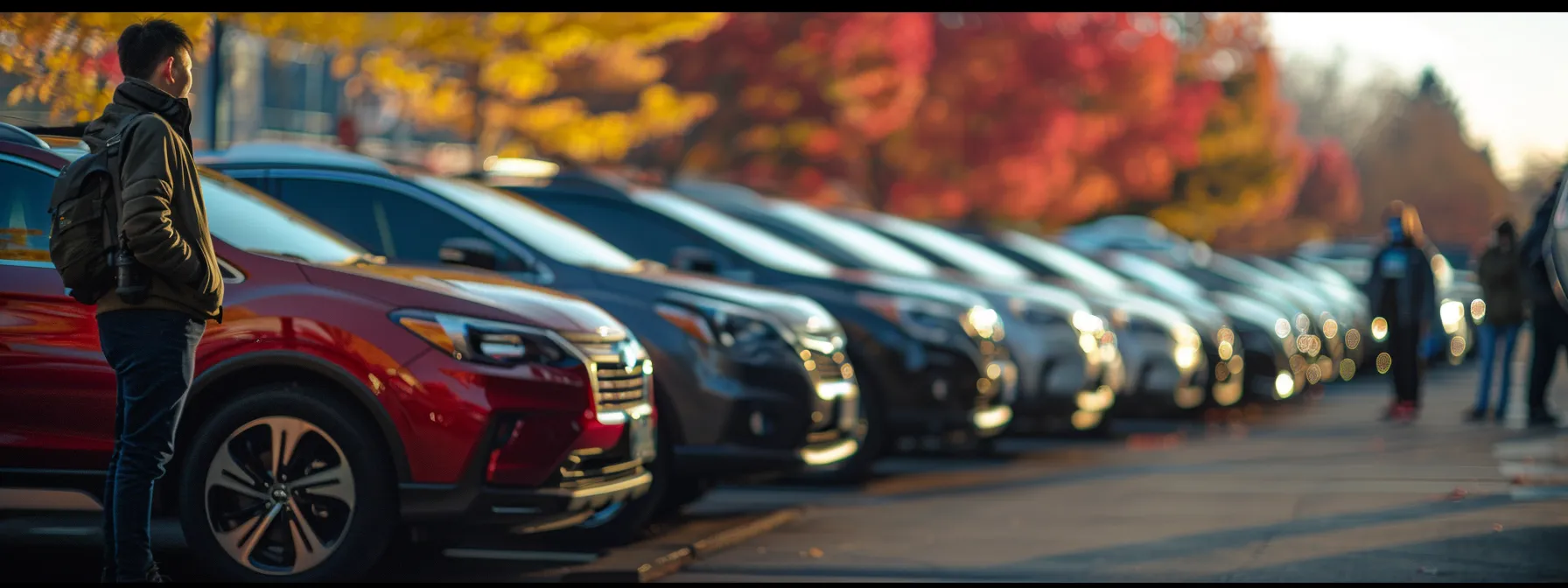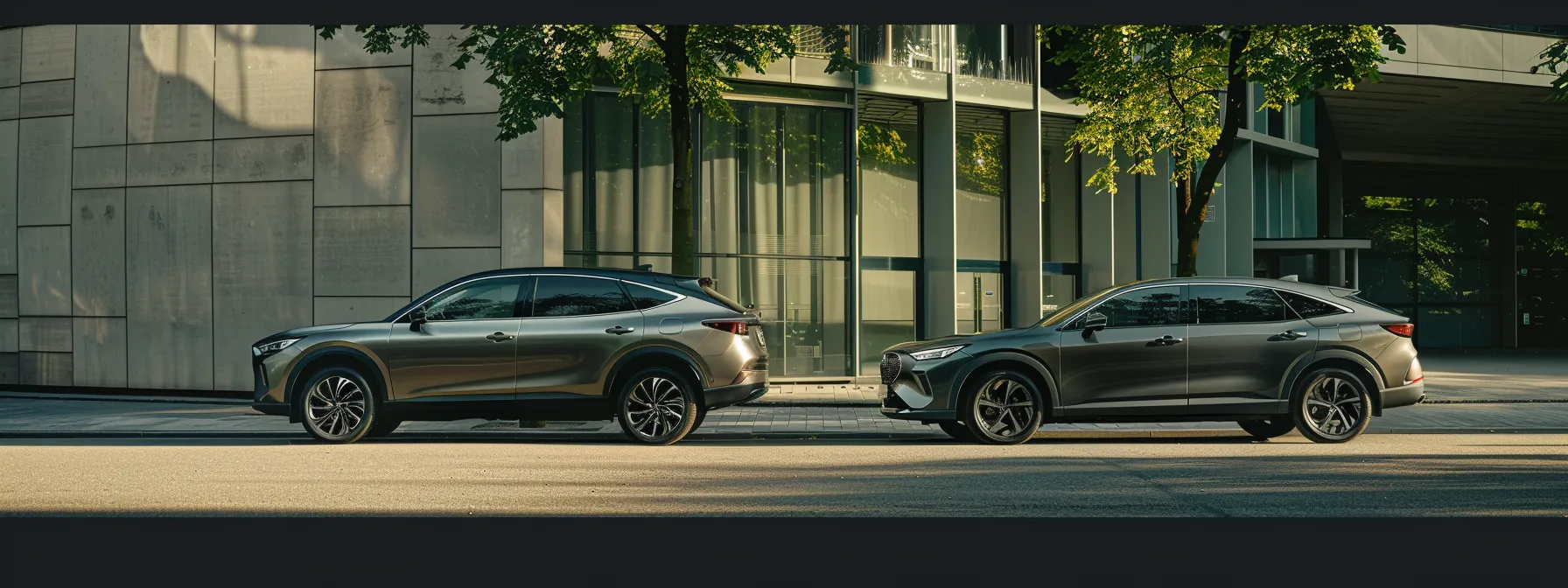Are you overwhelmed by the choices when picking a used hatchback? You’re not alone. Many buyers struggle with knowing where to start, especially with options like the Acura and various features, such as electronic stability control, to consider. In this guide, we will cover how to identify your needs, research popular models, and inspect vehicles effectively. You’ll learn the essentials for making a smart purchase while understanding the total cost of ownership, helping you avoid unexpected expenses like insurance premiums and oil changes. Let’s make your used hatchback buying experience straightforward and satisfying.
Key Takeaways
- determining a budget helps narrow down choices and avoid overspending
- assessing size and space ensures the hatchback fits daily needs and lifestyle
- prioritizing features improves the overall driving experience and aligns with personal preferences
- researching reliability and safety ratings aids in selecting a dependable used hatchback
- regular maintenance checks are crucial for long-term satisfaction and vehicle longevity
Identify Your Needs and Preferences

To find the right used hatchback, I start by determining my budget. Understanding how much I can spend sets the stage for realistic options. Next, I consider size and space requirements to ensure comfort for passengers and cargo. Evaluating my driving habits helps me choose between models, like the Mazda6, and prioritize features such as horsepower and braking systems. This thoughtful approach leads to a better buying experience.
Determine Your Budget for a Used Hatchback
Determining my budget for a used hatchback is my first step toward making a wise purchase. I typically start by researching prices of models I’m interested in, like the Toyota Prius or the Toyota Tacoma. This ensures that I have realistic options that fit my financial situation while considering the total cost of ownership, including maintenance and fuel efficiency. Having a clear budget helps narrow down choices and prevents me from overspending.
Next, I assess the additional costs associated with owning a hatchback. I think about insurance premiums, registration fees, and potential repair costs. For example, while an Infiniti may offer luxury, its maintenance costs can be higher than I expect. A well-rounded budget allows me to evaluate all necessary factors, ensuring that my chosen hatchback meets both my financial and practical needs effectively:
- Research prices of desired models.
- Consider total ownership costs.
- Evaluate insurance premiums.
- Account for maintenance expenses.
- Set realistic financial limits.
Consider the Size and Space Requirements
When I consider the size and space requirements for a used hatchback, I first think about my daily needs. Whether I need to transport family members, carry groceries, or handle sports gear makes a significant difference in my selection. For instance, if I am leaning towards the Subaru Legacy, I’ll appreciate its spacious interior for added comfort. I also consider whether I prefer a model with features like a continuously variable transmission, which can improve my driving experience in city traffic and offer better fuel efficiency.
Another essential aspect is the hatchback‘s cargo capacity. I take stock of how often I plan to use the vehicle for larger items or trips. For example, if I look into options such as the Honda Passport, it provides ample room for my outdoor adventures and regular errands alike. As I navigate through my online shopping, I ensure that the hatchback I choose meets both my lifestyle requirements and has the space needed to accommodate them effectively.
Evaluate Your Driving Habits and Lifestyle
When I evaluate my driving habits and lifestyle, I take into account factors like my daily commute and typical travel distances. For instance, if I frequently drive in urban areas, I may prefer a compact hatchback model year that offers enhanced maneuverability and fuel efficiency, such as the Chrysler. Alternatively, for longer highway trips, I could lean towards a more spacious option like the Infiniti QX60, which provides comfort and ample seating for passengers.
Understanding my lifestyle also influences my choice of features in a hatchback. If I lead an active life, I might prioritize models that offer versatile cargo space, like the Lexus NX. This is especially important for carrying sports equipment or groceries. By aligning my driving habits with the right hatchback, I can ensure my vehicle meets my needs while enhancing my overall driving experience.
Prioritize Features and Options You Want
When prioritizing features and options for a used hatchback, I focus on aspects that enhance my driving experience. For example, if I often drive in city traffic, I might consider a model like the Hyundai Elantra with a fuel-efficient gasoline engine, which offers excellent performance without sacrificing mileage. Additionally, I reflect on whether I prefer a manual transmission for better control and engagement while driving or an automatic option for convenience.
Another consideration is cargo space and interior comfort. If I have a growing family and need to transport bulky items, I might lean towards a hatchback that provides ample room, similar to a compact van, allowing me to fit sports gear or grocery bags with ease. By honing in on these specific features, I can choose a used hatchback that aligns with my lifestyle and ensures I enjoy every drive.
Now that you know what you want, it’s time to look at the best options out there. Popular used hatchback models await your discovery, and they might just be the perfect fit.
Research Popular Used Hatchback Models

As I dive into researching popular used hatchback models, I focus on reliable brands and specific models that catch my eye, such as the Hyundai Ioniq and its counterpart, the Hyundai Ioniq 6 sedan. Comparing fuel efficiency and performance is essential for making an informed decision. I also read Customer Reviews and owner experiences to gain insights into real-world use. Finally, I check safety ratings and any recalls, ensuring that the hatchback I consider aligns with my needs and priorities.
Explore Reliable Brands and Models
When exploring reliable brands and models for a used hatchback, I often turn to well-regarded names in the automotive industry. Two models that consistently stand out are the Hyundai Ioniq and the Honda Fit. The Ioniq is known for its excellent fuel efficiency and stylish design, while the Fit offers generous trunk space and versatility, making it a practical choice for families and urban drivers alike.
Another brand worth considering is Subaru, particularly the Crosstrek. This compact hatchback combines all-wheel drive capability with a spacious interior, perfect for those who enjoy outdoor activities. When evaluating these options, I make sure to consider not just the price but also factors like reliability, customer reviews, and overall build quality to ensure I find the best fit for my needs.
- Hyundai Ioniq – Fuel-efficient and stylish.
- Honda Fit – Offers generous trunk space and versatility.
- Subaru Crosstrek – Combines all-wheel drive with a spacious interior.
Compare Fuel Efficiency and Performance
When comparing fuel efficiency and performance, I pay close attention to how various models perform on the road. For instance, the Subaru Forester is known for its reliability and solid fuel economy, making it an excellent option for both city driving and weekend getaways. Test driving this model gives me a firsthand feel for its engine responsiveness and handling, which are crucial for my daily commutes.
Additionally, models like Buick offer a range of hatchbacks that balance comfort with decent performance. While I consider the practicality of hatchbacks, I also think about the features such as a comfortable head restraint that enhances my driving experience. Understanding how a hatchback performs in real conditions helps me make a more informed decision, ensuring I select a vehicle that meets my needs without sacrificing efficiency.
Read Reviews and Owner Experiences
Reading reviews and owner experiences is essential when searching for a reliable used hatchback. It’s important to consider well-regarded models like the Toyota Prius V for its fuel efficiency, or check out owner feedback on the Honda Pilot for its spaciousness. This direct insight highlights common issues and praised features, aiding me in making an informed decision that aligns with my needs.
I also pay attention to safety records reported by the National Highway Traffic Safety Administration. For instance, I look up the vehicle identification number (VIN) for the specific model I am interested in, such as the Nissan Murano, to see safety ratings and any recalls. This comprehensive understanding allows me to avoid potential pitfalls and choose a hatchback that has proven track records for reliability and safety:
- Research safety ratings from the National Highway Traffic Safety Administration.
- Read customer reviews for insights on specific models.
- Check the vehicle identification number for recalls and safety records.
- Compare experiences across different hatchback brands like Honda and Toyota.
- Look for feedback concerning performance and reliability.
Check Safety Ratings and Recalls
Before finalizing my choice of a used hatchback, I make it a priority to check safety ratings and recalls. I find it essential to review resources like the National Highway Traffic Safety Administration, which provides up-to-date information on models like the Ford Edge and Honda Odyssey. Knowing how these vehicles perform in crash tests and if there are any ongoing recalls helps me gauge the reliability and safety of my potential purchase.
Additionally, I look into specific issues related to the powertrain and structural integrity common to models like the BMW 3 Series. This information is not just about meeting safety standards; it’s about ensuring peace of mind during daily drives. By emphasizing both safety ratings and recall history, I aim to select a vehicle that prioritizes not just performance but also the safety of myself and my passengers.
You’ve done the research, and you know the models that catch your eye. Next, it’s time to see how they feel on the road; let’s inspect and test drive the vehicle to find your perfect match.
Inspecting and Test Driving the Vehicle

When inspecting and test driving a used hatchback, I focus on several key areas to ensure I’m making a sound decision. I start by examining the exterior and interior condition, looking for signs of wear and tear. Next, I verify the maintenance and service history to assess how well the vehicle has been cared for. During the test drive, I pay close attention to the handling and comfort, making sure it aligns with my expectations. Lastly, I listen for any unusual noises that could indicate underlying issues, utilizing resources like consumer reports or Edmunds to compare different car models, such as the Ford Fusion or a convertible, for any insights.
Examine the Exterior and Interior Condition
When I examine the exterior condition of a used hatchback, I look for signs of wear and damage that might affect the vehicle‘s performance and longevity. Checking for rust, dents, and scratches on models like the Nissan Rogue and Chevrolet Equinox can give me a good indication of how well the previous owner maintained the car. A thorough inspection of the tires and lights is also crucial, as these can indicate how the vehicle has been treated and whether any replacements might be needed shortly.
Equally important is the interior condition, where I assess the upholstery for stains and tears. In vehicles such as the Subaru Impreza or Lexus UX, I also pay attention to the functionality of various features like the air conditioning, audio system, and seat adjustments. Ensuring that everything is in optimal condition not only enhances my driving experience but also adds to the overall value of the used hatchback I’m considering:
- Inspect for exterior damage and rust.
- Check tire condition and tread depth.
- Assess interior upholstery and comfort.
- Test functionality of electronics and features.
- Look for signs of previous maintenance and repairs.
Verify Maintenance and Service History
Verifying the maintenance and service history of a used hatchback is critical for ensuring its reliability. I always ask for documentation that records past services, repairs, and any lease agreements. For instance, when considering a Nissan Altima, I look for regular oil changes and any major maintenance that has been performed, as this indicates a well-cared-for vehicle.
Understanding the vehicle‘s history not only provides insights into its performance but also helps me gauge potential future expenses. I pay special attention to any recurring issues mentioned in the service records, as these might hint at underlying problems that could arise later on. Checking for certification or inspection reports that indicate the car’s condition compared to other options in the inventory is also wise. Here’s a quick checklist to guide me:
- Request complete maintenance records.
- Look for service consistency and any irregularities.
- Check for any reported issues.
- Examine past lease agreements if applicable.
- Review inspection reports for verification.
Test Drive to Assess Handling and Comfort
When I test drive a used hatchback, I’m keen on assessing how it handles both in city traffic and on the highway. This experience allows me to evaluate aspects like steering responsiveness, braking effectiveness, and overall comfort. For instance, I found that models like the Toyota Sienna provide a smooth ride, making it a great option for family outings, while an Acura RDX offers a more performance-oriented feel, perfect for those who prioritize sportiness in their driving experience.
During the test drive, I pay attention to the seat comfort and cabin noise levels, as these factors significantly impact daily ownership. A hatchback that sits well and absorbs road imperfections effortlessly can enhance every journey. I also consider how the controls are laid out and how intuitively they function, ensuring that I won’t struggle with them once I own the vehicle. By taking the time to thoroughly assess these elements, I can confidently decide whether the hatchback I’m considering aligns with my expectations and overall lifestyle.
Listen for Unusual Noises or Issues
When I test drive a used hatchback, I always listen carefully for any unusual noises that could indicate underlying issues. For example, odd sounds coming from the transmission might suggest more serious mechanical problems, especially in models like the Chevrolet Cruze or Hyundai Sonata. If I hear clunks, rattles, or whining noises, I take note, as these could signify costly repairs that may not be covered by a warranty.
Additionally, I pay close attention to the vehicle‘s overall performance during the drive. A smooth experience should accompany a quiet cabin, but if I notice any grinding or hissing noises, that’s a red flag. Such sounds could be related to the brakes or other critical systems, impacting safety and reliability. By being attentive to these details, I can make a more informed choice and avoid potential pitfalls that could arise after purchase.
You’ve taken the car for a spin, feeling its power and comfort. Next, let’s break down what it will truly cost to own it over time.
Understanding the Total Cost of Ownership

Understanding the Total Cost of Ownership
When choosing the right used hatchback, calculating the total cost of ownership is crucial. I start by calculating insurance costs for models like the Subaru Outback or Toyota Avalon. Next, I estimate fuel and maintenance expenses, which can vary greatly between an economical sports car and a GMC Terrain. Additionally, I consider depreciation and resale value, planning for future repairs and upkeep to ensure my investment remains sound.
Calculate Insurance Costs for Used Hatchbacks
When I calculate insurance costs for used hatchbacks, I always start by obtaining quotes from multiple providers. This step helps me understand the various fee structures for different models, including those that may seem more expensive at first glance, such as certain pre-owned hatchbacks versus pickup trucks. It’s essential to consider factors like the vehicle‘s safety ratings and repair history, as these can significantly impact my insurance premiums.
Additionally, I make sure to inquire about any discounts I might qualify for, such as those for safe driving records or bundling policies. Knowing how much insurance will add to my yearly expenses is crucial when evaluating the total cost of ownership for used hatchback cars for sale. By shopping around and factoring these costs in with the help of knowledgeable dealers like Indy Auto Team, I can make a more informed decision that aligns with my financial goals:
- Start by obtaining quotes from multiple insurance providers.
- Consider the fee structures for different vehicle models.
- Inquire about potential discounts based on driving history.
- Evaluate the impact of insurance costs on overall budget.
- Consult with reputable dealers for insights on pre-owned cars.
Estimate Fuel and Maintenance Expenses
When I estimate fuel and maintenance expenses for a used hatchback, I focus on how these costs can impact my overall budget. For instance, hatchbacks like the Toyota Prius are known for exceptional fuel efficiency, which can save me money in the long run. By checking customer reviews, I can gauge how owners have felt about the upkeep costs associated with specific models, helping me make an informed decision when I Find My Car.
In addition to fuel costs, maintenance expenses can vary significantly between models. I tend to research the common repair needs of the hatchbacks I’m considering, like the Subaru Impreza, which has a reputation for reliability. By taking these factors into account, I ensure that I not only choose a vehicle that fits my budget now but also one that won’t become a financial burden later on.
Consider Depreciation and Resale Value
When considering a used hatchback, it’s essential to think about depreciation and resale value. Some vehicles, like the Honda Fit, tend to hold their value better than others, which means I could potentially recoup more money when it’s time to sell. Understanding the depreciation rate can help me make an informed choice that aligns with my financial goals, ensuring that my investment remains solid over time.
I also pay attention to factors that influence resale value, such as the make and model’s reputation for reliability. Vehicles with strong safety ratings and low maintenance costs, such as the Subaru Impreza, often attract buyers, which can lead to a higher resale price down the line. Therefore, by selecting a used hatchback that retains value well, I can enhance my long-term financial strategy while enjoying the benefits of my vehicle now:
- Research the depreciation rates of various hatchback models.
- Select models known for reliability and strong resale prices.
- Consider the impact of safety ratings on resale value.
Plan for Future Repairs and Upkeep
When I choose a used hatchback, it’s important to plan for future repairs and upkeep. I consider the typical maintenance schedule for models I’m interested in, such as the Volkswagen Golf or Ford Focus, and assess potential long-term expenses. This proactive approach enables me to budget for regular service needs, like oil changes and brake inspections, which can keep my vehicle in top condition and mitigate major repair costs down the road.
Additionally, I prepare for unexpected repairs by setting aside a fund specifically for vehicle maintenance. This could cover anything from tire replacements to more significant issues like transmission repairs. By anticipating these costs and having a financial buffer, I can enjoy my used hatchback with peace of mind, knowing I’m ready for any future expenses that may arise:
- Review the maintenance schedules for your chosen hatchbacks.
- Budget for regular service and potential repairs.
- Establish a fund for unexpected automotive expenses.
You understand what it costs to own a car. Now, it’s time to talk about making that car yours.
Negotiating and Finalizing the Purchase

In this section, I focus on essential steps for negotiating and finalizing the purchase of a used hatchback. I will prepare questions for the seller to gain clarity on the vehicle‘s history and condition. It’s crucial to negotiate the best price based on my research. I’ll also explore financing options available to me and ensure all necessary paperwork and documentation are completed for a smooth transaction.
Prepare Questions for the Seller
When preparing questions for the seller of a used hatchback, I focus on key areas that matter to me as a buyer. I always ask about the vehicle‘s service history, including any major repairs or maintenance completed. Questions about previous ownership, accident history, and overall condition help paint a complete picture of what I’m potentially purchasing.
Additionally, I inquire about any warranties or return policies that may apply to the used hatchback. Knowing if there are any guarantees gives me peace of mind, especially if I’m investing in a model that could require future repairs. This preparation ensures that I gather crucial information, helping me make a more informed decision and negotiate effectively with the seller.
Negotiate the Best Price for the Hatchback
When I negotiate the best price for a used hatchback, I rely on the research I’ve conducted beforehand. I gather details about the market value of similar models to establish a fair price range. Armed with this information, I approach the seller confidently, highlighting any concerns I might have found during my inspection, such as maintenance records or exterior wear. This strategy not only lends credibility to my offer but also emphasizes that I’m informed, making it easier for the seller to consider my proposal seriously.
I also focus on maintaining a respectful and open dialogue during the negotiation process. I express my appreciation for the vehicle while clearly stating my budget constraints. If the seller appears hesitant, I’m ready to discuss other incentives, like covering certain fees or adjusting my financing plan to make the deal more palatable for both sides. This collaborative approach helps build rapport, increasing the likelihood of reaching a mutually beneficial agreement while ensuring I get the best possible deal on my used hatchback purchase.
Understand Financing Options Available
Understanding my financing options is a critical step in the purchasing process for a used hatchback. I often explore different avenues, such as dealership financing, bank loans, or credit unions. Each option comes with distinct interest rates and terms, so comparing these can help me make a decision that fits my budget. For example, if I have a pre-approved loan from my bank, it often gives me leverage during negotiations, allowing me to secure a better deal on the overall price of the vehicle.
Additionally, I pay close attention to monthly payment options and total loan terms when reviewing financing possibilities. Stretching out payments may lower my monthly expenses, but it could result in me paying more in interest over time. I always calculate the total costs involved to ensure I’m not just focusing on the monthly figure, but rather understanding how it affects my financial situation long-term. By being well-informed about financing, I can confidently approach negotiations when buying my used hatchback, ultimately leading to a deal that suits my needs and budget.
Complete Necessary Paperwork and Documentation
Completing the necessary paperwork and documentation is a crucial step in finalizing the purchase of a used hatchback. I always ensure that I have all titles, bills of sale, and any warranties properly signed and dated by both myself and the seller. This documentation not only protects my investment but also ensures that the vehicle is legally transferred into my name, allowing for a hassle-free ownership experience.
Additionally, I take the time to review any financing agreements if I am opting for a loan. It’s important to understand the terms, interest rates, and monthly payment obligations before signing any documents. By being thorough and organized in handling the paperwork, I can confidently move forward with my purchase, knowing I’ve covered all necessary aspects for owning my new hatchback.
The deal is done, and the keys are finally yours. But the journey doesn’t end here; learning how to keep your new car running well will bring you peace of mind for years to come.
After Purchase: Ensuring Long-Term Satisfaction

To ensure long-term satisfaction with my used hatchback, I prioritize scheduling regular maintenance checks, which are crucial for keeping the vehicle in optimal condition. Joining owner communities and forums provides valuable insights from fellow drivers. I also consider extended warranties or service plans for extra peace of mind. Ultimately, enjoying my used hatchback safely and responsibly is essential for a rewarding ownership experience.
Schedule Regular Maintenance Checks
Scheduling regular maintenance checks for my used hatchback is essential for long-term satisfaction and reliability. I typically set a reminder for routine services, such as oil changes, tire rotations, and brake inspections, to keep my vehicle running smoothly. By adhering to this maintenance schedule, I not only extend the life of my car but also prevent small issues from developing into costly repairs down the line.
In my experience, staying on top of recommended maintenance helps in safeguarding my investment. It’s also beneficial to keep records of all services performed, as this information can be valuable if I decide to sell the car in the future. A well-documented maintenance history enhances resale value and provides peace of mind, knowing that my hatchback is in good condition for years to come.
Join Owner Communities and Forums
Joining owner communities and forums can significantly enhance my experience with a used hatchback. These platforms allow me to connect with fellow owners who share valuable insights, tips, and advice based on their personal experiences. I can ask questions about maintenance issues or feature recommendations, making it easier to navigate the ownership journey and get the most out of my vehicle.
Additionally, these communities often provide real-time updates on recalls, new products, and any known issues with specific models. I appreciate that I can learn from others who have encountered similar challenges with their hatchbacks. Engaging with experienced owners helps me stay informed and minimizes surprises down the road, ultimately ensuring long-term satisfaction with my purchase.
Consider Extended Warranties or Service Plans
Considering an extended warranty or service plan for my used hatchback has been a wise choice in my car-buying journey. These options can provide extra peace of mind, especially for vehicles with more complex systems. For instance, knowing that I have coverage for potential repairs lets me enjoy my daily drives without constantly worrying about unexpected expenses.
I’ve found that selecting a service plan tailored to my driving habits can also enhance my ownership experience. Many plans offer benefits like regular maintenance, which ensures my vehicle remains in top shape. By investing in these protections early on, I feel more secure driving my hatchback, knowing I’m prepared for whatever comes down the road.
Enjoy Your Used Hatchback Safely and Responsibly
To ensure I enjoy my used hatchback safely and responsibly, I make it a priority to familiarize myself with the vehicle‘s safety features. Regularly checking the functionality of essential systems like brakes, lights, and tires not only enhances my driving experience but also keeps me safe on the road. By investing time in this maintenance, I can prevent issues that could lead to accidents and ensure that my hatchback remains reliable for all my transportation needs.
I also practice responsible driving habits, which are critical to enhancing both my safety and the longevity of my hatchback. Following speed limits, avoiding distractions, and adhering to traffic regulations form the foundation of a responsible driving approach. This commitment not only protects my investment but also creates a safer environment for everyone on the road, helping me to enjoy my hatchback for years to come.
Conclusion
Choosing the right used hatchback is crucial for balancing budget, practicality, and lifestyle needs. By defining your requirements and researching reliable models, you can make informed decisions that prevent future financial regrets. Prioritizing maintenance, safety ratings, and ownership costs ensures that your investment remains sound over time. Ultimately, a thoughtful approach to selecting a used hatchback enhances your driving experience and provides lasting satisfaction.
Recent Posts

Honda Civic vs Toyota Corolla: Ultimate MPG Comparison
Are you trying to decide between the Honda Civic and Toyota Corolla for your next car? Both models are known for their reliability and fuel efficiency, but which one truly offers better miles per gallon (MPG)? In this comparison, I’ll break down the official MPG ratings, real-world performance, and the engineering behind their fuel efficiency. [...]

SUV vs Sedan: Analyzing Depreciation Rates Comparison
When choosing a men’s wedding ring, many people overlook titanium, assuming it lacks the elegance of platinum or gold. However, titanium men's rings offer unmatched durability, lightweight comfort, and a modern aesthetic that aligns with today’s wedding ring trends. In this article, you will discover the benefits of titanium wedding bands, including their hypoallergenic properties [...]

Guide to Successful Bad Credit Auto Financing
Are you struggling to finance your car due to bad credit? You're not alone. Many people face challenges when seeking auto financing, but there are options available. In this guide, I will cover how to understand your credit score, explore bad credit auto financing options, and navigate the application process successfully. By the end, you'll [...]
Find the car you need.
At Indy Auto, we are committed to providing you with the best solutions tailored to your driving needs. Whether you’re navigating city streets or cruising down the highway, our dedicated team ensures that you have access to top-quality vehicles, parts, and services that enhance your driving experience.
